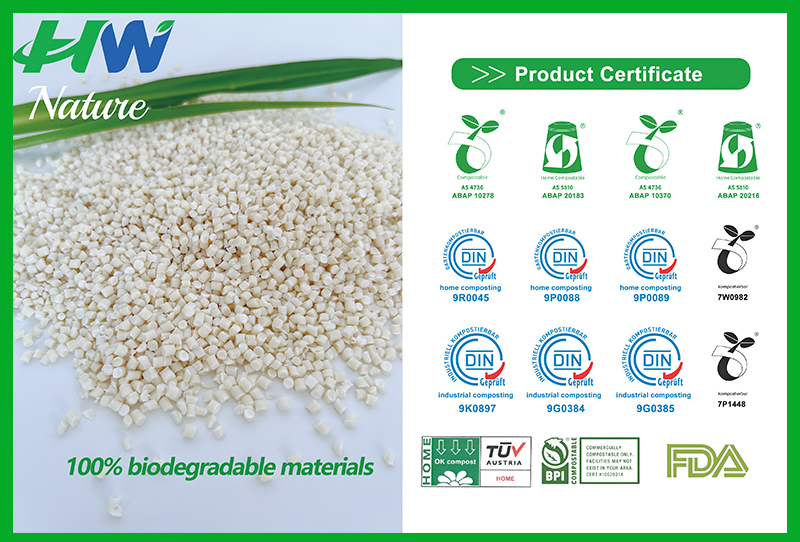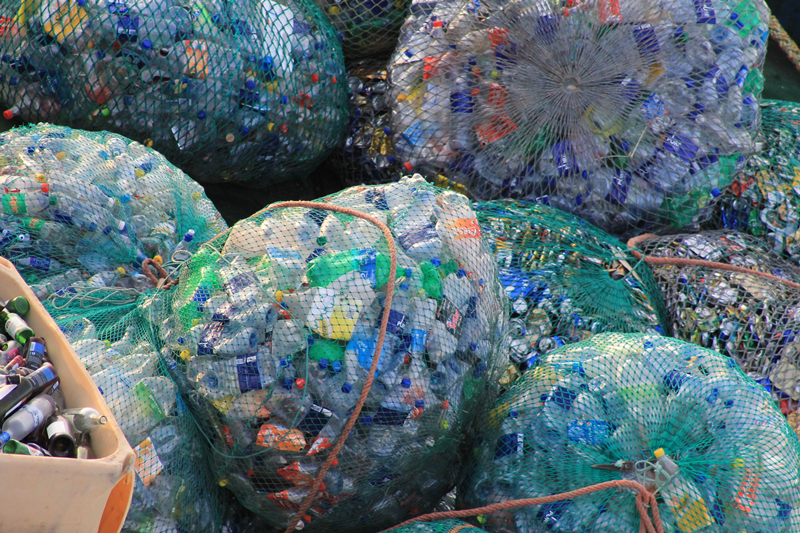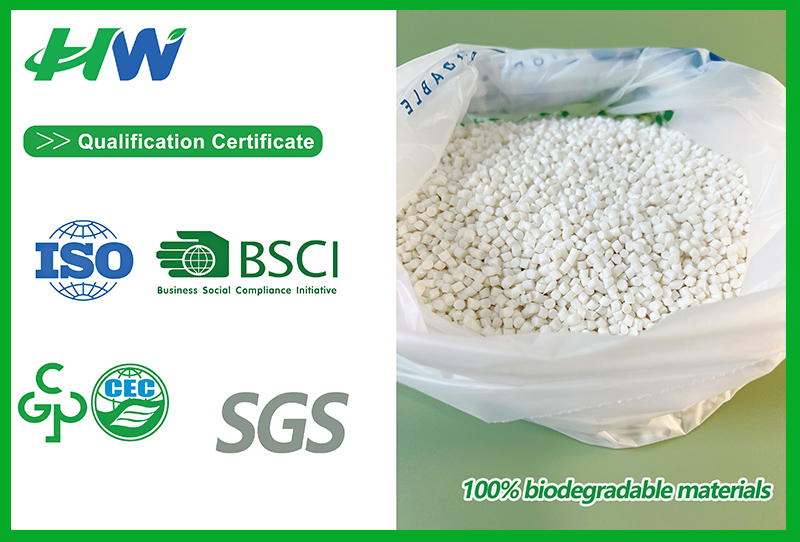The "white pollution" that was repeatedly mentioned a few years ago is now rarely heard of. Some people say they are rarely used anymore, but is that really the case?
In fact, the use of plastic has not decreased, it is just that we have changed the composition of plastic to biodegradable plastic. In addition, nature itself is also regulating it.

The biodegradable raw materials produced by Huawei Company have obtained degradation certifications from domestic, EU (DIN CERTCO, TUV), US (BPI), Australia (ABA) and other countries or regions. It is a fully biodegradable material produced by melt seeding plasticization extrusion process using PBAT as the substrate, modified with starch and calcium carbonate. The material does not contain polyolefin plastics and can be degraded under specific conditions such as natural or soil composting, turning into harmless substances such as carbon dioxide and water.
The global annual production of plastic has exceeded 400 million tons, with a large amount of plastic ultimately becoming waste, posing a serious threat to the environment and human health.
The current situation of plastic pollution is as follows:

Wide range of pollution: Plastic products are ubiquitous in the environment, and their traces can be found from deep-sea trenches to the highest mountain tops. Especially, marine plastic pollution is particularly severe, forming huge "garbage belts" such as the Pacific Garbage Patch.
Low recycling rate: Despite global efforts to promote plastic recycling, the current plastic recycling rate is still low due to the wide variety of plastic types, high recycling costs, and limited recycling technologies. Most plastic waste either enters landfills or flows into the natural environment.
The issue of microplastics is prominent: many plastic products are disposable and difficult to recycle. They can persist in the environment for decades or even centuries and are often broken down into microplastics. These tiny plastic particles are not only difficult to remove, but can also enter the human body through the food chain, posing potential health hazards.
The impact on humans and ecosystems: Plastic pollution not only poses a threat to human health, but also has profound effects on ecosystems. For example, scientists have found large amounts of plastic fragments in the bodies of various seabirds, which not only block their digestive systems but also cause severe visceral damage and may even lead to death.
Degradable plastics have a wide range of applications in packaging, agriculture, healthcare, and other fields. Among them, the application in the packaging field is the most extensive. Products such as degradable plastic bags, degradable fresh-keeping films and degradable foam boxes are gradually replacing traditional plastic products. In addition, biodegradable plastics are widely used in fields such as medical devices, disposable tableware, and biomass energy.

1. Reduce pollution: Biodegradable plastics can quickly decompose under natural conditions, unlike traditional plastic materials that persist in the environment for a long time, reducing pollution to soil, water sources, and the ecological environment.
2. Resource conservation: The main raw materials for the production of biodegradable plastics are natural biomaterials such as plant starch, malt, etc. Compared with traditional fossil fuels, the production process of biodegradable plastics is more sustainable.
3. Supporting sustainable development: The emergence of biodegradable plastics has promoted the deepening of the concept of sustainable development and propelled the development of a sustainable development model centered on circular economy.
In order to address the issue of plastic pollution, governments, businesses, and environmental organizations around the world have taken a series of measures, such as implementing plastic ban policies, promoting plastic recycling, developing biodegradable plastics, and innovating alternatives. With the continuous improvement of environmental awareness, the market prospects for biodegradable materials will become even broader. In the future, the development direction of biodegradable plastics will mainly focus on improving degradation speed, performance, cost, and expanding their application fields. People's use of plastic has not decreased, but human environmental awareness has increased, replacing traditional plastics with biodegradable plastics, so "white pollution" is slowly disappearing.
